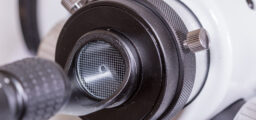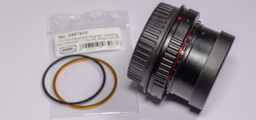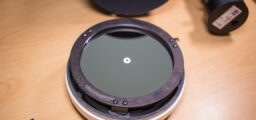My new DSLR 🙂 After a year using the 100D I was looking for an update… The decision was hard. Full frame or again APS-C…
Finally my decision goes to APS-C. With it, I still can use all my lenses, the remote controller (same model für 100D/70D), the Astronomik CLS Clip Filter and the most important thing:
I stay at crop factor 1.6x… 
so I don’t lose (perceived) focal length.
Technical Data
- 20.2 MPixel
- Resolution 5472×3648
- Pixel Size 4.1 micrometer
- ISO100-ISO12800 (Max. ISO25600)
- Exp.Time 1/8000s – 30s, Bulb
- 3″ Flip TouchScreen
- FullHD movies 1920×1080 30/25/24p
- Battery Type LP-E6(N)
- Weight 755g
- Astro modification
80-85% H-Alpha sensitivity







4 comments
Hi Karol,
First I want to thank you for producing such an amazing resource. Your setup has inspired my own and I have just gotten started with my first few images. I am currently considering buying a new camera because my current camera the Canon 20Da is fairly old and I think it may have quite a bit more noise than a newer camera like the Canon 6D. When I came across this post on your website I was confused about why you wanted to keep a crop sensor. Can’t a full frame shot be cropped down in postprocessing to achieve the perceived focal length you mention above? Or am I missing something. I was excited to get the full frame sensor because I felt like it would broaden the potential objects I can shoot, but now i’m a bit concerned that I could be losing something in the exchange. If you have any input please let me know!
Thanks again for sharing our journey in such great detail!
-Russell
Hi Russell
Thank you for your kind words!
My targets are primary DeepSky objects. That was the reason why I buyed again a crop dslr. Let me explain: you have a given resolution (20Mpixel on 70D). A 6D has also 20MPixel. If you take the same image with both dslrs, you’ll still have 20MPixel resolution with the 70D sensor, while if you crop the image of the 6D to the same field of view like with the 70D, you’ll loose resolution. Thats the only reason I decided to go again with a crop sensor. Maybe there are more pros and contras, but that was the main reason. If my primary targets were Milkyway shots (generally ultra wide field) my decision would be the 6D. Hope it’s understandable 😉 if not, please ask again.
Clear Skies
Karol
Karol,
Thanks for the quick response! This makes perfect sense. I am guessing at some point the ability to resolve the image into smaller pixels is limited by the telescope/ lense or atmospheric conditions do you know if this is true and if so where I might read more about it?
Thanks again and clear skies to you!
Russell
You’re right. I noticed that the seeing condition has an impact to the resolution. On this lens review page they write about the lens resolution (http://www.opticallimits.com/canon_eos_ff/612-canon400f56ff?start=1). But to be honest, I don’t know how this resolution is affected by the lens components and unfortunately I don’t know pages to read more about it. Keep in mind, I’m not a pro. This is my hobby and there are many things I don’t understand in detail 😉
Clear Skies
Karol